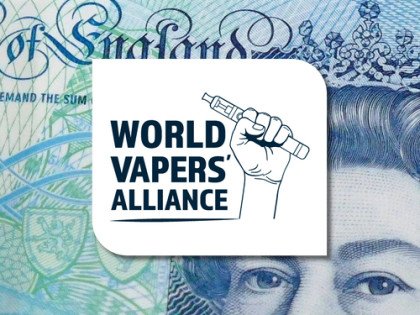The situation has got to such a grave level that American Doctor Brian Goldman advertised his ignorance to the world by choosing to sideline ecigs and purchased cigarettes for his son.
“I could have bought him a Juul. I could have bought him a vape,” he said. “But I thought that it would be very easy to turn him into the equivalent of a three-pack-a-day smoker with the nicotine levels that you can acquire, and I didn't want him to get used to that and comfortable with that, so that if he received vape liquid from other people he would graduate onto other things.”
Many vapers have stated over the years that they would happily buy their children equipment if it meant they wouldn’t smoke, but the state of the USA is such that a harm reduction product is now seen as being deadlier than the lethal product it is supplanting.
Writing in Science Mag, Amy Fairchild, Cheryl Healton, James Curran, David Abrams and Ronald Bayer of the American Association for the Advancement of Science recently said: “Although it may be decades before we fully understand the long-term consequences of vaping nicotine without smoke, many argue that we know enough and stress that too many smokers die every day we delay taking reasonable and rational action based on the science to date. Evidence from multiple strong observational studies and randomized trials suggests that vaping nicotine is more appealing and more effective than NRT at displacing smoking.”
“Vaping flavours with or without nicotine may appeal to youth, but flavours also appeal to adult smokers and help them switch. Evidence suggests that the vast majority of smokers who successfully switch completely from smoking combustible products to vaping do so—after weeks, months, or years of dual use—by transitioning from vaping tobacco, or menthol-flavoured liquids, to other flavours and often to lower nicotine concentrations or even to no nicotine in order to reduce the triggers that remind them of their prior smoking product.”
What Goldman is so eager to ignore when it comes to his son is mirrored by legislators around the world and even by some in the U.K. Clive Bates addresses a number of their objections to vaping in one of his final written pieces of 2019.
Clive reduced the conversation surrounding vapes and tobacco harm reduction to 15 questions, including:
- Are e-cigarettes less harmful than cigarettes?
- How much less harmful are e-cigarettes than cigarettes?
- Do the recent cases of severe lung injury and deaths prove that e-cigarettes are harmful?
- Do e-cigarettes help people quit smoking?
- Do e-cigarettes appeal to adolescents?
- Should e-cigarettes be banned?
- Should flavours be banned to stop youth vaping?
- Should limits on the strength of nicotine be imposed?
- What can be done to protect young people?
- What the right approach to regulating e-cigarettes?
- Should there be a special tax on e-cigarettes?
- Should e-cigarettes be regulated like cigarettes?
- Should vaping be banned by law in public places and workplaces?
- Should e-cigarette sales be restricted to people aged 18 and over? And,
- Are e-cigarettes a tobacco industry ploy to keep people smoking?
Despite Clive’s common-sense positions on vaping, 2020 will see America continue its war on harm reduction and other countries will follow suit. Either through ignorance, laziness or corruption, they will pursue a course that continues to trap their populations in danger.
Returning to Fairchild et al., the challenge for politicians in 2020 is as follows: “Whatever specific regulations and policies are promulgated at local, state, national, or international levels, policies or regulations must be risk-proportionate. The most harmful products on the nicotine-harm continuum, combustible products, should be much more aggressively and stringently regulated than less harmful noncombusted nicotine products. Policies that fail to differentiate will fail public health.”
Related:
- Why Dr. Brian Goldman bought cigarettes for his underage son who has FASD – [link]
- “Evidence, alarm, and the debate over e-cigarettes” by Fairchild, Healton, Curran, Abrams and Bayer – [link]
- “Vaping policy - rapid questions and answers” by Clive Bates – [link]
Dave Cross
Journalist at POTVDave is a freelance writer; with articles on music, motorbikes, football, pop-science, vaping and tobacco harm reduction in Sounds, Melody Maker, UBG, AWoL, Bike, When Saturday Comes, Vape News Magazine, and syndicated across the Johnston Press group. He was published in an anthology of “Greatest Football Writing”, but still believes this was a mistake. Dave contributes sketches to comedy shows and used to co-host a radio sketch show. He’s worked with numerous start-ups to develop content for their websites.
Join the discussion
Harm Reduction For The Rich
The United Kingdom risks becoming a harm reduction country only for the wealthy, according to Michael Landl of the World Vapers’ Alliance
CAPHRA Highlights Tobacco Control Flaws
The Coalition of Asia Pacific Tobacco Harm Reduction Advocates highlights the flaws in tobacco control which has led to the rise of black market in Australia
A Missed Opportunity at COP10
The Smoke Free Sweden movement says that COP10 was a missed opportunity to save millions of lives
COP10: Promote Tobacco Harm Reduction
Experts with Smoke Free Sweden are emphasising the urgent need for a Tobacco Harm Reduction approach at COP10











